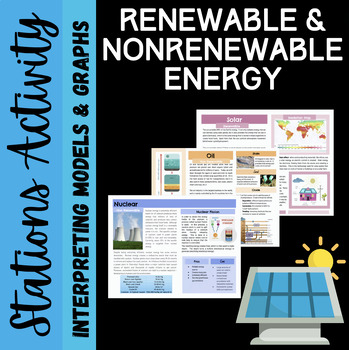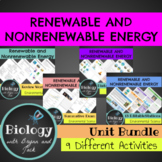Renewable and Nonrenewable Energy: Stations
- Zip
What educators are saying
Also included in
- This resource includes everything to get you started with a unit about renewable and nonrenewable energy. It has bellringers, lectures, readings, reviews, online practice, and assessments. Check out each product below for more information!Each product is editable so you can differentiate it to fitPrice $23.99Original Price $29.91Save $5.92
Description
Renewable and Nonrenewable Energy Stations is a great way to introduce your students to the basics about energy transformations and different types of energies. Students travel from station to station analyzing information, data and graphs relating to climate change and recording their ideas on the answer sheet provided (SEE PREVIEW).
This set of 13 EDITABLE stations covers:
- Energy Transformations
- Renewable and Nonrenewable sources
- Oil
- Coal
- Mining Practices
- Natural Gas
- Nuclear
- Biomass
- Wind
- Solar
- Tidal
- Hydroelectric
- Geothermal
They can be used as a PPT review for the whole class, flash cards for struggling students, a formative assessment, or you can print them out and use them as stations. My students find this so much more engaging than another review worksheet!
I have uploaded this in both a PDF and .pptx format, so you can modify and differentiate for your classroom and students' needs. Enjoy!
NGSS: HS-LS2-7 Design, evaluate, and refine a solution for reducing the impacts of human activities on the environment and biodiversity.
HS-ESS3-5. Analyze geoscience data and the results from global climate models to make an evidence-based forecast of the current rate of global or regional climate change and associated future impacts to Earth's systems.






